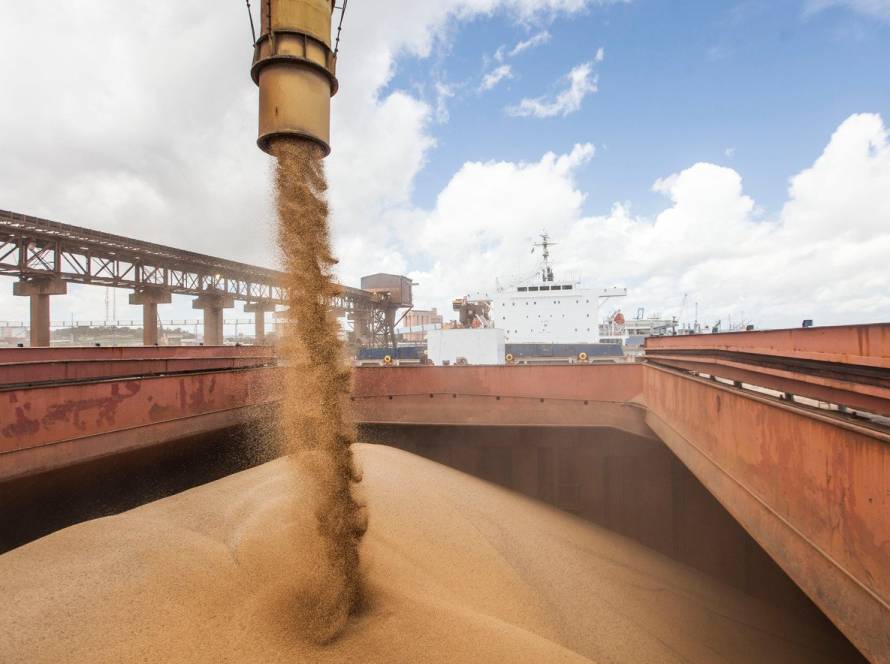The Goiana Agricultural Defense Agency (Agrodefesa), in partnership with local producers and technical managers, managed to obtain authorization from the Ministry of Agriculture and Livestock (Mapa) for Mundo Novo to export cucurbits, such as watermelon, melon and pumpkin to Argentina, Paraguay and Uruguay.
The inclusion was possible because the municipality in Goiás was officially included in the Risk Mitigation System (SMR) for the Anastrepha grandis pest, a species of fruit fly that affects cucurbit crops. With this recognition, local producers are able to export fresh fruit to countries that impose quarantine restrictions on this pest.
Located in the northern region of the State, Mundo Novo is the 18th municipality in Goiás to obtain this certification, granted by the MAPA's Agricultural Defense Secretariat and made official by Ordinance No. 1,251/2025, published in the Official Gazette of the Union (DOU) on February 28, 2025.
Since 2006, due to the interest of producers, cities in different regions of the state have obtained the status, starting with Uruana, Carmo do Rio Verde, Itapuranga and Jaraguá, important fruit producing centers, mainly watermelon and pumpkin. In addition to these, Rio Verde, Santa Helena, Maurilândia, Cristalina, Ipameri, Goianésia, São Miguel do Araguaia, Edealina, Luziânia, Nova Crixás, Rubiataba, Porangatu and Jussara also have the recognition.
“The Government of Goiás, through Agrodefesa, plays a fundamental role in supporting farmers, helping them comply with legislation and technical standards to enable the export of fresh cucurbit fruits. Watermelon, melon and pumpkin are of great economic importance to our state,” highlights the president of Agrodefesa, José Ricardo Caixeta Ramos.
He adds that the achievement of this status for yet another municipality in Goiás is the result of the efforts of agricultural inspectors and technical managers responsible for the crops, duly certified by Agrodefesa in the Phytosanitary Certification of Origin System. “These professionals have ensured significant advances for fruit farming in Goiás. The result is the opening of new international business opportunities,” adds Caixeta.
Procedures for recognition
For a municipality to be recognized in the SMR, the interested producer must carry out phytosanitary surveys on cucurbit crops for a minimum and uninterrupted period of six months. This process must be monitored by a Technical Manager (RT) authorized by Agrodefesa. Based on this data, the Agency prepares a project and forwards it to the Ministry of Agriculture requesting official recognition.
“Agrodefesa's work ranges from technical guidance, containing the necessary phytosanitary procedures, to the preparation of documentation with the technical manager and project preparation, subject to audits by the Ministry of Agriculture to obtain recognition in the SMR, through the publication of a federal ordinance”, explains Agrodefesa's Plant Health manager, Daniela Rézio.
In the case of Mundo Novo, the coordinator of the Cucurbit Risk Mitigation System Program at Agrodefesa, Mário Sérgio de Oliveira, highlights that the producer contacted the Agency and, in June 2023, monitoring began to survey the detection and delimitation of the pest in June. “This work was carried out for six consecutive months, until December of the same year. At the end of this period, we prepared the project with the collected data and submitted it to Mapa”, he explains.
In addition to supporting producers in this process, Agrodefesa and Mapa promote training courses for independent agricultural engineers, aiming at their qualification to issue the Phytosanitary Certification of Origin (CFO) and the Consolidated Phytosanitary Certification of Origin (CFOC) for the Anastrepha grandis pest in cucurbits.
Production and export
According to data from the Brazilian Institute of Geography and Statistics (IBGE), in 2023, national watermelon production was approximately 1,781,971 tons. Of this total, Goiás accounted for 204,617 tons, consolidating itself as the second largest producer in the country, behind only Bahia, which led with 230,006 tons.
In the ranking of exporters, according to Mapa's Agrostat, Goiás occupied the seventh position in 2024, exporting US$1.5T 270.1 thousand and 3,843 tons of the fruit to international markets. The main destinations for Goiás watermelon were Paraguay, Uruguay and Argentina.



